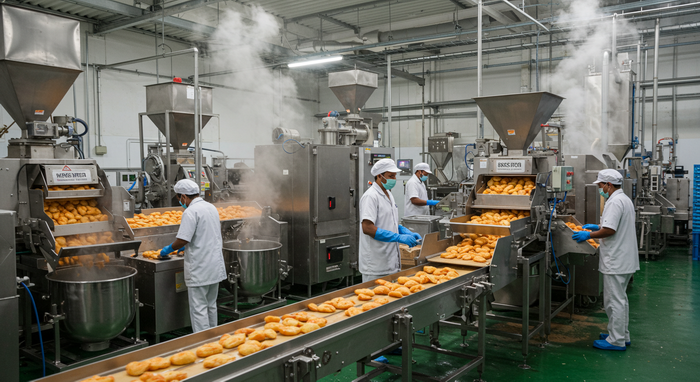The big hot topic out there in the world of nutrition is how modern degenerative diseases are primarily caused by 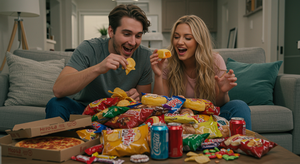 our modern diet of processed and ultra-processed foods. It is estimated that an average American’s diet is 60% processed food. Our food supply is so contaminated with food chemicals that most of our foods cannot even be sold in Canada or Europe. American food corporations have created our favorite foods for these countries without all the garbage they put in our food in the good old USA. They create what their consumers want. We seem to want better living through chemistry in our diet, so that is what they give us.
our modern diet of processed and ultra-processed foods. It is estimated that an average American’s diet is 60% processed food. Our food supply is so contaminated with food chemicals that most of our foods cannot even be sold in Canada or Europe. American food corporations have created our favorite foods for these countries without all the garbage they put in our food in the good old USA. They create what their consumers want. We seem to want better living through chemistry in our diet, so that is what they give us.
What diseases am I talking about – heart disease, diabetes, chronic pulmonary disease, many cancers, most arthri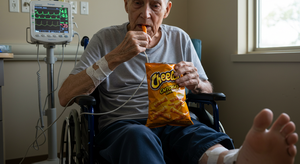 tis, Alzheimer’s, Parkinson’s, multiple sclerosis, ALS, osteoporosis, basically most of the diseases that hit us after the age of 40. The last 70 years of nutrition research is finally finding a common label for what is triggering these diseases in us modern humans – processed and ultra-processed foods. The problem is the terms are not well defined and so do not really tell us what to eat and what not to eat. What are processed foods? We have been told some things like hot dogs, potato chips, and soda are bad for us, but what else are they talking about?
tis, Alzheimer’s, Parkinson’s, multiple sclerosis, ALS, osteoporosis, basically most of the diseases that hit us after the age of 40. The last 70 years of nutrition research is finally finding a common label for what is triggering these diseases in us modern humans – processed and ultra-processed foods. The problem is the terms are not well defined and so do not really tell us what to eat and what not to eat. What are processed foods? We have been told some things like hot dogs, potato chips, and soda are bad for us, but what else are they talking about?
What is processing? Anything you do to the food 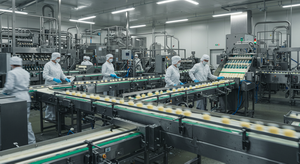 is a type of processing.
is a type of processing.
Cleaning and washing: Removing dirt, bacteria, and other impurities.
Cutting, chopping, or grinding: Altering the size or shape of the food.
Extracting: Separating one component of the food from the rest
Cooking, heating, or pasteurizing: Applying heat to preserve or enhance flavor.
Adding ingredients: Incorporating additives like preservatives, sweeteners, flavorings, or nutrients.
Canning, freezing, or packaging: Preserving the food for extended shelf life.
As is obvious from this list, other than picking a piece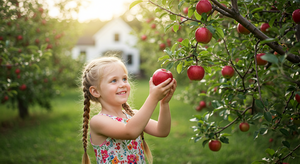 of fruit off a tree and eating it as is, everything we eat is processed in some way. Everything sold in a grocery store is processed. Everything eaten in a restaurant is processed. Anything cooked is processed. So labeling the cause of disease as processing needs a lot more understanding than that term supplies. The issue is people want sound bytes for answers, so that is what media provides. Understanding requires a lot more information than people want to listen to. Lucky you, I am going to provide some of that information! I like to believe that my patients want the real story so they can make intelligent choices for themselves.
of fruit off a tree and eating it as is, everything we eat is processed in some way. Everything sold in a grocery store is processed. Everything eaten in a restaurant is processed. Anything cooked is processed. So labeling the cause of disease as processing needs a lot more understanding than that term supplies. The issue is people want sound bytes for answers, so that is what media provides. Understanding requires a lot more information than people want to listen to. Lucky you, I am going to provide some of that information! I like to believe that my patients want the real story so they can make intelligent choices for themselves.
Let’s get more detailed:
Cleaning and washing – if you are washing with just water, then this should be fine. If you are washing with chemicals to preserve color and freshness or inhibit mold and bacteria, then this may be a problem.
Cutting and chopping is generally no problem, but gr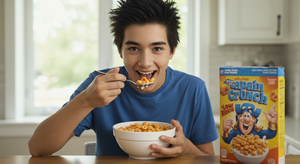 inding is a different story. When you grind foods, you are replacing what your teeth are supposed to do and generally doing a much finer job of it. This makes the food more digestible. This sounds good, but food is designed to break down in our gut in a slow fashion so that we don’t get a massive load of nutrients washing into our bloodstream all at once. This is a super problem with starchy foods like wheat, corn, oats, and rice (like in making breakfast cereals). They break down so fast that it causes a big sugar spike that gradually produces insulin resistance and finally diabetes. Basically, when grains are ground into flours and eaten, you are creating metabolic disease. This is amplified when you remove the bran fiber (like in white flour), which would normally slow the digestion down some.
inding is a different story. When you grind foods, you are replacing what your teeth are supposed to do and generally doing a much finer job of it. This makes the food more digestible. This sounds good, but food is designed to break down in our gut in a slow fashion so that we don’t get a massive load of nutrients washing into our bloodstream all at once. This is a super problem with starchy foods like wheat, corn, oats, and rice (like in making breakfast cereals). They break down so fast that it causes a big sugar spike that gradually produces insulin resistance and finally diabetes. Basically, when grains are ground into flours and eaten, you are creating metabolic disease. This is amplified when you remove the bran fiber (like in white flour), which would normally slow the digestion down some.
Extracting: when you make apple or orange juice you are extracting the sweet juice from the fibrous pulp. This t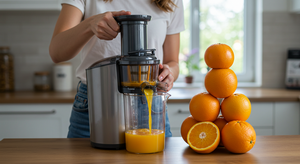 akes a food that is perfectly designed to nourish the body with fruit sugars that slowly enter the body and turns it into a blast of simple sugars that drive blood sugar sky high. Fruit juice is worse than full sugar soda. Separating wheat or rice from its natural fiber husk does the same thing to the grain and similarly spikes your blood sugar. You can fight this problem with how you prepare the grain, such as pan frying the grain first before cooking it in water or fermenting the grain (like in sour dough). This makes the grain harder to digest and slows down the blood sugar spike. Why not just use whole grain? Some people do, but the husk also contains fragile oils (wheat germ oil and rice bran oil) which go rancid very easily. So if the grains are stored for any length of time or they are ground into a flour, the rancid oils present a more damaging concern to the body than the blood sugar issue. Humans evolved to eat whole foods the way nature provided them. Some foods we were never designed to eat, like grains and legumes, but we found we could make them usable if we cooked them. But we are supposed to eat the fiber that naturally comes with a food to moderate how quickly our body absorbs it.
akes a food that is perfectly designed to nourish the body with fruit sugars that slowly enter the body and turns it into a blast of simple sugars that drive blood sugar sky high. Fruit juice is worse than full sugar soda. Separating wheat or rice from its natural fiber husk does the same thing to the grain and similarly spikes your blood sugar. You can fight this problem with how you prepare the grain, such as pan frying the grain first before cooking it in water or fermenting the grain (like in sour dough). This makes the grain harder to digest and slows down the blood sugar spike. Why not just use whole grain? Some people do, but the husk also contains fragile oils (wheat germ oil and rice bran oil) which go rancid very easily. So if the grains are stored for any length of time or they are ground into a flour, the rancid oils present a more damaging concern to the body than the blood sugar issue. Humans evolved to eat whole foods the way nature provided them. Some foods we were never designed to eat, like grains and legumes, but we found we could make them usable if we cooked them. But we are supposed to eat the fiber that naturally comes with a food to moderate how quickly our body absorbs it.
Cooking, heating, or pasteurizing: Low-temperature c ooking is usually fine, like in sous vide, crock pot, or boiling. But as soon as you crank that temperature up, you both destroy certain nutrients and create new toxic chemicals. For instance, when I sous vide a nice New York steak, it is very healthy, but if I want to give it a nice pan-fried finish, the high heat from the pan will create nitrosamines on the surface of the steak (particularly if the market washed the meat with nitrites to keep the color of the meat looking good), which are carcinogenic. Pasteurizing is good for killing bacteria, but it also forms toxic alterations in the fats in dairy products. Potatoes are “pasteurized” with radiation to prevent early sprouting.
ooking is usually fine, like in sous vide, crock pot, or boiling. But as soon as you crank that temperature up, you both destroy certain nutrients and create new toxic chemicals. For instance, when I sous vide a nice New York steak, it is very healthy, but if I want to give it a nice pan-fried finish, the high heat from the pan will create nitrosamines on the surface of the steak (particularly if the market washed the meat with nitrites to keep the color of the meat looking good), which are carcinogenic. Pasteurizing is good for killing bacteria, but it also forms toxic alterations in the fats in dairy products. Potatoes are “pasteurized” with radiation to prevent early sprouting.
Adding ingredients: this is the doorway to all sorts of e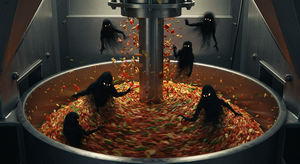 vil entering our food supply. Way back when I was in high school, the red flag was raised on artificial food coloring and other food additives triggering ADD and ADHD problems in susceptible children. Back then, a Dr. Feingold developed a diet protocol that eliminated many food additives and helped many children.
vil entering our food supply. Way back when I was in high school, the red flag was raised on artificial food coloring and other food additives triggering ADD and ADHD problems in susceptible children. Back then, a Dr. Feingold developed a diet protocol that eliminated many food additives and helped many children.
There is a mountain of research on the damaging effec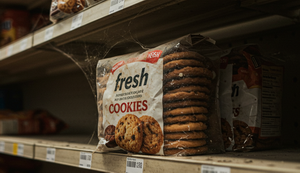 ts of various preservatives, flavoring agents, sweeteners, and so on. But the American consumer wants to pretend that their food is fresh even though it has been sitting on shelves for weeks and months. We want flavors that don’t exist in the real world, and above all, we want things sweet! The chemicals that are used to produce those illusions are not good for the body.
ts of various preservatives, flavoring agents, sweeteners, and so on. But the American consumer wants to pretend that their food is fresh even though it has been sitting on shelves for weeks and months. We want flavors that don’t exist in the real world, and above all, we want things sweet! The chemicals that are used to produce those illusions are not good for the body.
Additives are not all bad, though. Years ago, the govern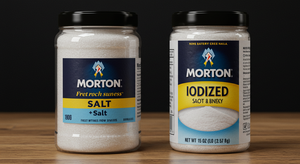 ment mandated the addition of iodine to salt to stop an epidemic of thyroid goiter that was happening in parts of the US. Adding vitamin C or folic acid to some foods can help people get nutrients that they might otherwise be missing from their diets. So, there is a place for nutrient addition to foods, especially considering how depleted our foods have become as our soils have lost their rich trace mineral composition.
ment mandated the addition of iodine to salt to stop an epidemic of thyroid goiter that was happening in parts of the US. Adding vitamin C or folic acid to some foods can help people get nutrients that they might otherwise be missing from their diets. So, there is a place for nutrient addition to foods, especially considering how depleted our foods have become as our soils have lost their rich trace mineral composition.
Canning, freezing, or packaging: Freezing is actually 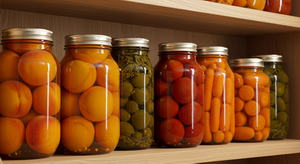 a pretty good choice for preserving foods. Canning is a second best, although there have been issues of heavy metals leaching into the foods that have been canned in metal cans. Glass canning is pretty good as long as it is done right. Packaging is the big issue as it does not stop the action of oxygen destroying the food. To inhibit this action, various preservatives have to be added to the food or to the packaging itself. In my view, if something can sit on a shelf for months in a package, it probably is not really a food anymore.
a pretty good choice for preserving foods. Canning is a second best, although there have been issues of heavy metals leaching into the foods that have been canned in metal cans. Glass canning is pretty good as long as it is done right. Packaging is the big issue as it does not stop the action of oxygen destroying the food. To inhibit this action, various preservatives have to be added to the food or to the packaging itself. In my view, if something can sit on a shelf for months in a package, it probably is not really a food anymore.
Now let’s dip a toe into the scary world of ultra-processi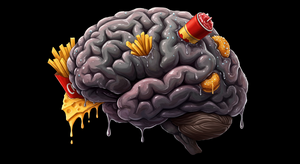 ng. This refers to food-like substances that are the product of complex industrial processes and involve lots of chemically synthesized substances. These are basically your snack foods, meal replacements, breakfast cereals, and candies. They generally contain chemicals that hijack your brain to make them seem hyper-tasty and addictive. They play total havoc on your body and confuse the heck out of it. Check the label of ingredients – you will find a bewildering list of things you have never heard of before. Over the last 50 years, an estimated 10,000 new chemicals have been invented to put onto and into foods, and most have never been tested for safety. They are delicious but dangerous. Even those that have been tested as safe are now being found to interact with each other to increase diseases like diabetes. These chemicals combine together to form poisons. This is brand new science and very scary.
ng. This refers to food-like substances that are the product of complex industrial processes and involve lots of chemically synthesized substances. These are basically your snack foods, meal replacements, breakfast cereals, and candies. They generally contain chemicals that hijack your brain to make them seem hyper-tasty and addictive. They play total havoc on your body and confuse the heck out of it. Check the label of ingredients – you will find a bewildering list of things you have never heard of before. Over the last 50 years, an estimated 10,000 new chemicals have been invented to put onto and into foods, and most have never been tested for safety. They are delicious but dangerous. Even those that have been tested as safe are now being found to interact with each other to increase diseases like diabetes. These chemicals combine together to form poisons. This is brand new science and very scary.
So what should we eat? I prefer real foods – fresh mea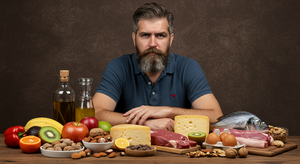 ts, fish, shellfish, eggs, vegetables, fruits, nuts, aged natural cheeses, legumes, whole grains (like rice) and pseudo grains (like quinoa), and fresh spices. For prepared foods, I prefer foods with very few ingredients, like unflavored yogurt, kombucha, kefir, coconut milk, fish sauce, vinegars, mustards, hot sauces, and occasionally simple corn tortillas. Anything more complex that requires several ingredients, I will cook myself. Pretty much, I avoid anything with a label of ingredients on it, and definitely if it has more than 5 ingredients. I have to recognize all the ingredients as real food. For sweetener, I use stevia, monk fruit, and allulose. I have at times used honey and maple syrup. That is pretty much my shopping list. Lately, I have been on a fresh blackberry binge.
ts, fish, shellfish, eggs, vegetables, fruits, nuts, aged natural cheeses, legumes, whole grains (like rice) and pseudo grains (like quinoa), and fresh spices. For prepared foods, I prefer foods with very few ingredients, like unflavored yogurt, kombucha, kefir, coconut milk, fish sauce, vinegars, mustards, hot sauces, and occasionally simple corn tortillas. Anything more complex that requires several ingredients, I will cook myself. Pretty much, I avoid anything with a label of ingredients on it, and definitely if it has more than 5 ingredients. I have to recognize all the ingredients as real food. For sweetener, I use stevia, monk fruit, and allulose. I have at times used honey and maple syrup. That is pretty much my shopping list. Lately, I have been on a fresh blackberry binge.
The world of processed foods is a little complex. Some processing is just fine, while other kinds of processing are terri ble. This includes processing at home. Deep frying anything is a disaster. You have to be careful with cooking at high heats, and heating vegetable oils immediately turns them rancid. If you are using high heat, make it very quick, like in wok cooking. Low and slow is the mantra in my house. Hopefully, this little overview will give you a better understanding of the factors that may be affecting your health every time you put food in your mouth. We overcome complexity with knowledge. Either avoid food with labels, or understand what the label says really well and avoid foods with non-food stuff in them. Yes this takes a little work, but this is an investment in your health to lower your chances of getting one of those nasty chronic diseases.
ble. This includes processing at home. Deep frying anything is a disaster. You have to be careful with cooking at high heats, and heating vegetable oils immediately turns them rancid. If you are using high heat, make it very quick, like in wok cooking. Low and slow is the mantra in my house. Hopefully, this little overview will give you a better understanding of the factors that may be affecting your health every time you put food in your mouth. We overcome complexity with knowledge. Either avoid food with labels, or understand what the label says really well and avoid foods with non-food stuff in them. Yes this takes a little work, but this is an investment in your health to lower your chances of getting one of those nasty chronic diseases.
Take care,
David
Ellen
On Thursday Ellen had her first return to the surgeon’s office to have the stitches removed from the site on her neck where the skin graft was removed. That area is healing nicely, although a bit red at the moment. The graft is hopefully connecting to her cheek and upper lid to form a new lower eyelid. Next Thursday the doctor will open the eye and form the new eyelid. – pretty amazing stuff!
where the skin graft was removed. That area is healing nicely, although a bit red at the moment. The graft is hopefully connecting to her cheek and upper lid to form a new lower eyelid. Next Thursday the doctor will open the eye and form the new eyelid. – pretty amazing stuff!
Brain sugar drives Alzheimer’s
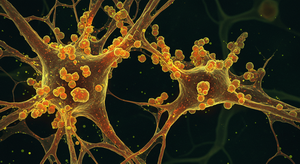 New research has found that the sugar stored in brain tissue, becomes the glue that ties together the protein Tau tangles that cause the progression of the disease. Normally this sugar is metabolized for fuel when we run out of other available fuel sources, such as when we fast. But if we never run low on fuel this sugar builds up and causes the formation of tangles.More New research has found that the sugar stored in brain tissue, becomes the glue that ties together the protein Tau tangles that cause the progression of the disease. Normally this sugar is metabolized for fuel when we run out of other available fuel sources, such as when we fast. But if we never run low on fuel this sugar builds up and causes the formation of tangles.More
___________________________
“Life is not about winning, it is about connection and creation. Winning is just the high of the addict trying to chase away fear and separation. It is very temporary, while the joy from connection and creation is forever.“~David DeLapp
_____________________________________
Greens and cruciferous veggies lower heart disease
Leafy greens and cruciferous veggies like broccoli con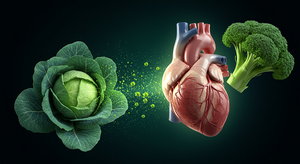 tain high levels of the vitamin K1. Getting 120 micrograms a day of K1 reduces heart disease up to 43%. tain high levels of the vitamin K1. Getting 120 micrograms a day of K1 reduces heart disease up to 43%.
More
____________________________
“The change of growth does not come from judging and suppressing bad behaviors. It comes from facing and overcoming the fears that motivated the bad behavior in the first place. “
~David DeLapp
________________________________________
Fructose triggers inflammation
Fructose in higher doses (like in a soda) has been fou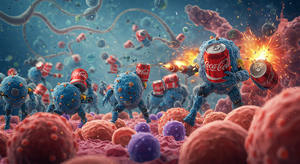 nd to cause a genetic switch to flip on making immune cells super sensitive to bacterial components. These immune cells then start attacking the body which ramps up inflammation all over. nd to cause a genetic switch to flip on making immune cells super sensitive to bacterial components. These immune cells then start attacking the body which ramps up inflammation all over.
More
________________________
“You are never entitled to a specific feeling from life. Everyone is different and their feeling reactions to everything in life are different. For this reason, you can not make another person be happy by your actions, because you have no idea how they will react to your actions.“
~David DeLapp
|
|
